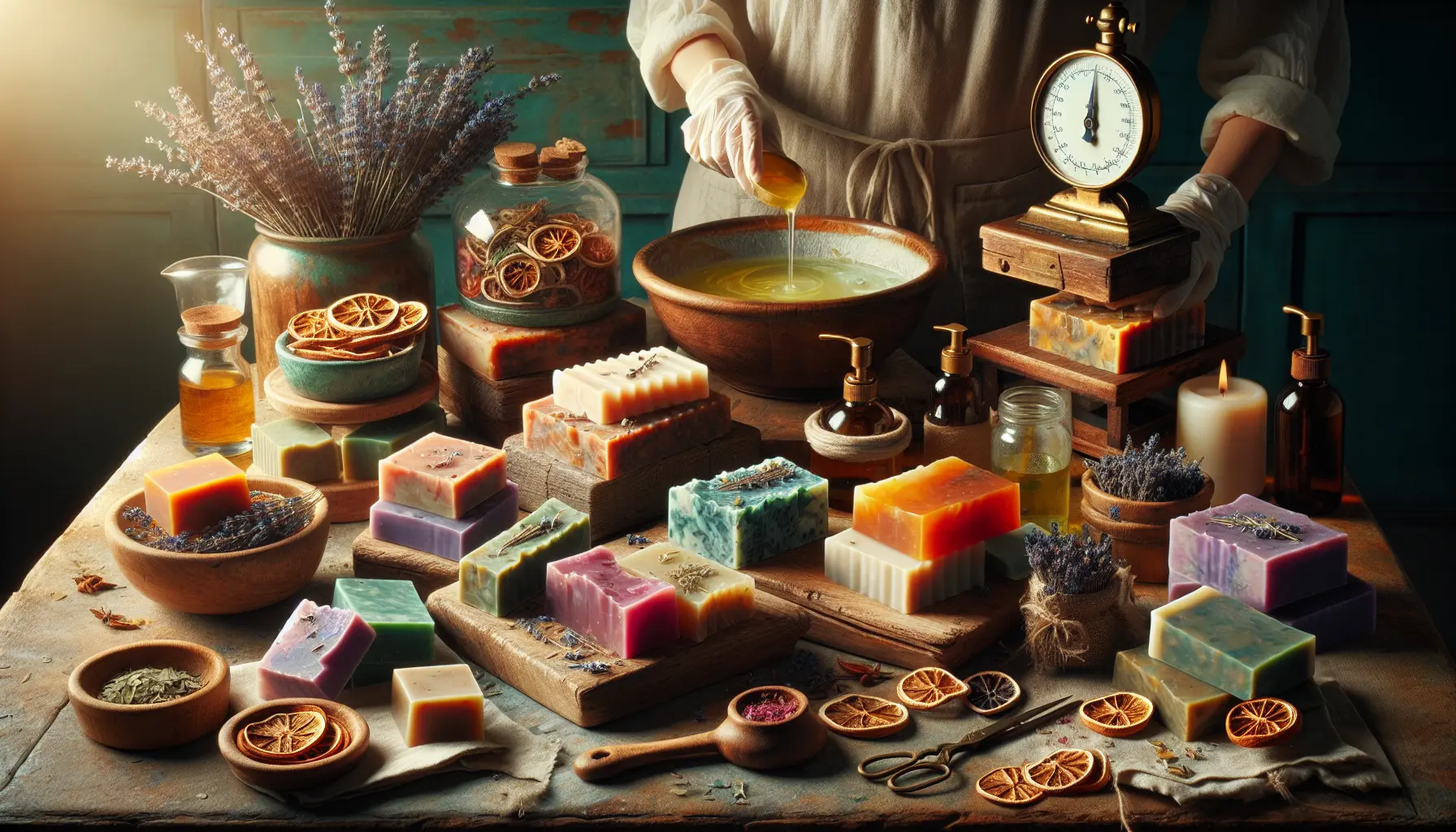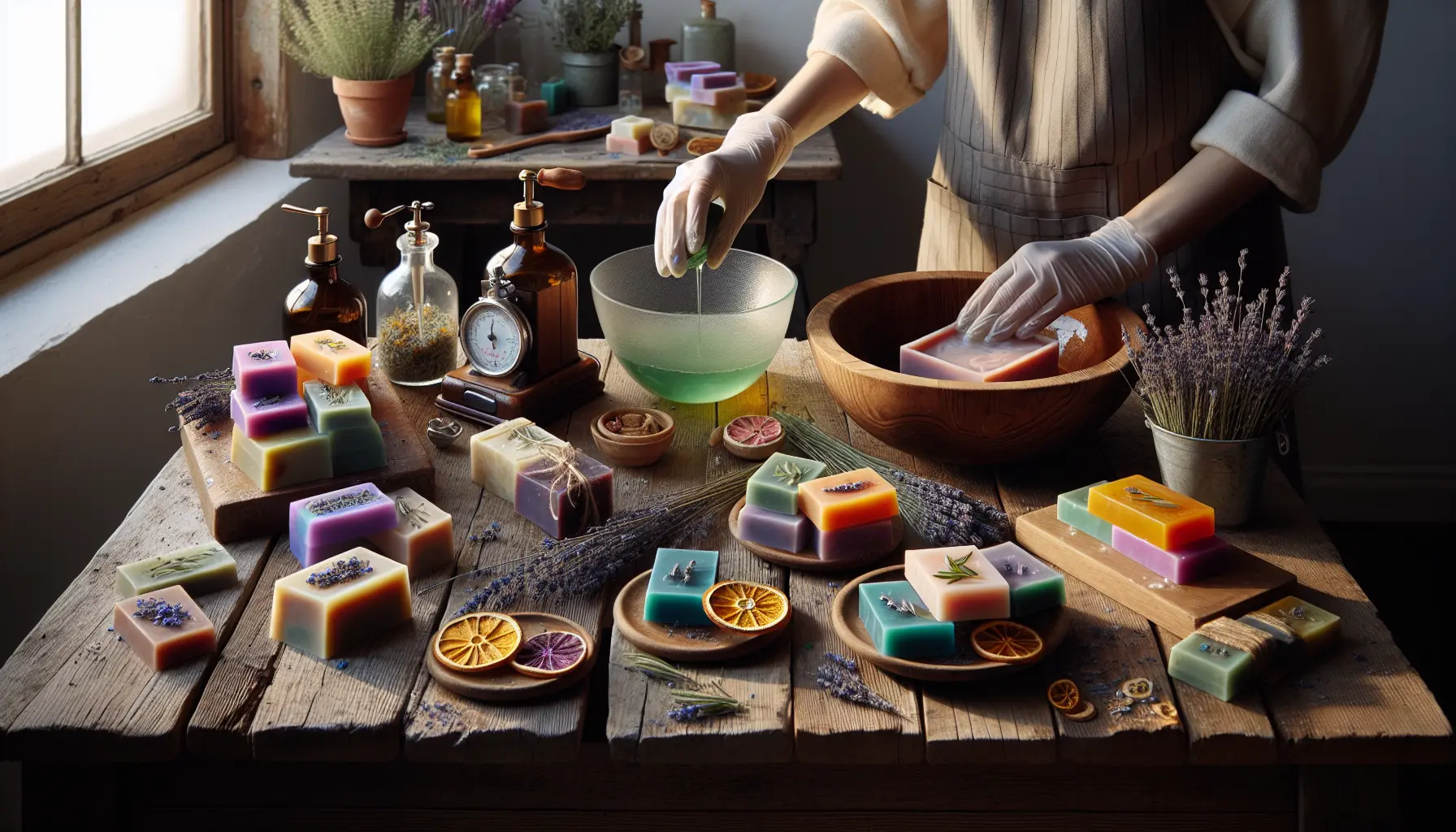Soap Making Transforms Everyday Crafting

Crafting has evolved into a platform where individuals can express their creativity, and the art of soap making has become an integral part of this movement. Every year, millions of crafty individuals seek unique and creative ways to express themselves, but few know the benefits of soap making.
With the rise of DIY culture, soap making has become an attractive outlet for those looking to create something truly personalized and beneficial.
In contrast to commercial soap, the saponification process involved in handcrafted soap making allows for complete control over the ingredients and customization options.
This results in a product that is not only gentle on the skin but also environmentally friendly. The use of essential oils and lye in precise measurements enables crafters to create unique, handcrafted soaps through the process of saponification, often incorporating glycerin and pouring into molds.
Introduction To Artisanal Soap Making
In an era where self-care and individuality are paramount, the ancient craft of soap making has evolved to cater to diverse skin types and preferences, promising a more personalized cleansing experience.
Unlocking the benefits of handcrafted soap lies in its ability to provide a tailored experience for individual skin types and preferences. This shift towards customization is driven by the growing awareness of the harsh chemicals found in commercial soaps, leading many to seek out natural ingredients and unique fragrance combinations.
Artisanal soap makers have been pushing the boundaries of creativity, incorporating exfoliants like oatmeal and natural colorants such as spirulina to create a wide range of textures and hues.
This freedom to experiment has led to the development of truly unique and effective soap recipes, which undergo a careful curing process to ensure maximum quality. Our soap making techniques include both cold process and hot process methods, incorporating a variety of fragrance options, natural colorants, exfoliants, and careful curing.

Essential Ingredients For Handcrafted Soaps
When it comes to crafting artisanal soaps that truly care for the skin, the devil lies in the details, and it all begins with the selection of high-quality trace elements that work in harmony to create a nourishing experience.
Handcrafted soaps have gained popularity for their natural and nourishing properties, and the importance of essential ingredients cannot be overstated. Understanding the role of these ingredients can help soap makers create effective and beneficial products that stand out in a crowded market.
Natural oils and butters, such as coconut, olive, and shea, provide moisturizing properties that superfat the skin, leaving it feeling soft and supple.
These base oils help to create a rich, creamy lather that is the hallmark of a well-crafted, DIY soap. The artisanal DIY enthusiast carefully selected the superfat and base oils to create a custom skin care product, tracing every step of the process to ensure perfection.
Artisanal Soaps
- Natural oils and butters, such as coconut, olive, and shea, provide moisturizing properties that superfat the skin, leaving it feeling soft and supple.
- Handcrafted soaps have gained popularity for their natural and nourishing properties, and the importance of essential ingredients cannot be overstated.
- The selection of high-quality trace elements is crucial in creating a nourishing experience for the skin.
- A well-crafted, DIY soap is characterized by a rich, creamy lather that is achieved through the careful selection of superfat and base oils.
Understanding The Saponification Process
Unlocking the secrets of soap making begins with a profound appreciation for the intricate dance of fatty acids and alkalis, a union that gives birth to a vast world of moisturizing possibilities.
At its core, saponification is a chemical reaction that involves the combination of fatty acids and an alkali to produce soap. This process has been refined over centuries, with ancient civilizations using ash and plant-based oils to create crude soaps.
Today, mastering the saponification process is essential for crafting bespoke cleansing bars that cater to diverse skin types and preferences.
By grasping the underlying chemistry, soap makers can control the quality and texture of their final product, creating customized recipes infused with unique additives and herbal infusions. A brief history of soap making reveals a steady evolution, from ancient Mesopotamia to modern-day craftsmen creating moisturizing, cleansing bars through rebatching, incorporating additives, and infusing herbal botanicals.
Cold Process Vs Hot Process
As the artisanal soap-making community continues to flourish, enthusiasts are increasingly curious about the intricacies of this ancient craft, particularly when it comes to the two primary methods that dominate the industry.
Understanding the basics of soap making is essential before diving into the world of Cold Process and Hot Process.
Soap making involves mixing oils, fats, and lye to create a chemical reaction that produces soap, often incorporating swirling techniques to achieve unique textures.
This ancient craft has been around for thousands of years, with evidence of soap making dating back to ancient civilizations such as the Egyptians and Greeks, who likely used palm-free ingredients in their recipes.
The two main methods of soap making, Cold Process and Hot Process, differ significantly in their approach. Cold Process soap making involves mixing oils and lye at room temperature, allowing the mixture to blend slowly, which creates a beautiful, unique design using swirling techniques and layering, and can be palm-free and vegan, without using tallow.
Soap Making
- Evidence of soap making dates back to ancient civilizations such as the Egyptians and Greeks.
- Soap making involves mixing oils, fats, and lye to create a chemical reaction that produces soap.
- Cold Process soap making allows for the creation of unique designs using swirling techniques and layering.
- Cold Process soap making can be palm-free and vegan, without using tallow.
Choosing Molds And Essential Oils
Crafting unique and effective soaps requires a deep understanding of the interplay between ingredients, textures, and presentation. In this delicate balance, the right molds and essential oils can elevate your creations from ordinary to extraordinary.
Unlocking the Full Potential of Your Soap Creations
The shape and size of a mold play a significant role in achieving the desired soap design, with high olive oil content recipes often requiring larger molds to accommodate soft and pliable textures.
Different materials, such as silicone, metal, and plastic, also impact soap quality and release, with silicone molds preferred for their flexibility and ease of release, while metal molds produce a more rustic, textured soap. When selecting molds for specific recipes, factors like coconut oil content, soap hardness, and temperature must be considered, along with the type of milk used, such as goat milk, and the addition of nourishing ingredients like shea butter and olive oil, as well as the use of caustic soda and pH testing.
Natural Colorants And Exfoliants
As the beauty industry evolves, a spotlight is being shone on the importance of unmolding harmful chemicals from our daily routines, and instead, opting for a more natural approach.
For centuries, natural colorants and exfoliants have been used in beauty products, with a rich history dating back to ancient civilizations.
With the advent of synthetic ingredients, many of these natural ingredients were replaced by cutting-edge technology.
Today, there is a growing movement towards moving away from synthetic ingredients and embracing natural alternatives.
This shift is driven by the importance of sustainability, gentle skin care, and the desire for more natural beauty products, which involves careful labeling and consideration.
Natural colorants and exfoliants offer a range of benefits, from being rich in antioxidants and anti-inflammatory properties to providing natural UV protection and enhancing skin texture and appearance. These ingredients are also used in the processes of unmolding, cutting, stamping, packaging, labeling, and following safety precautions.
| Benefits of Natural Colorants and Exfoliants | Characteristics |
|---|---|
| Rich in Antioxidants and Anti-Inflammatory Properties | Provide Natural UV Protection |
| Enhance Skin Texture and Appearance | Gentle on Skin |
Curing And Packaging Your Creations
In the world of handmade beauty products, the unseen heroes are often the ones that ensure long-term success, specifically the processes that take place after the mixing and blending are complete.
Proper curing and packaging techniques are essential for maintaining the quality and shelf life of your handmade creations.
Preservatives play a vital role in preventing the growth of bacteria and mold, while antioxidants help to protect the product from oxidation and spoilage.
From butters and waxes to precision temperature control with a thermometer, every element counts in the DIY craft project journey.
Whether you’re crafting unique skincare solutions or indulging in creative pursuits like candle-making, understanding the curing process and its importance in ensuring your creations reach their full potential is vital.
Why Try DIY Soap Making
Unlock the power of natural ingredients and take the first step towards a healthier, more radiant you.
Creating your own soap recipes allows you to harness the nourishing properties of oatmeal and shea butter, providing gentle care for your skin. By steering clear of harsh chemicals and artificial fragrances commonly found in commercial soaps, you can enjoy a more natural and effective cleansing experience.
Making your own soap gives you the opportunity to contribute to a greener environment.
By reducing waste and packaging, and opting for sustainable ingredients, you can make a positive impact on the planet’s ecosystem.
DIY soap making offers a fun and creative outlet, allowing you to experiment with unique textures and colors using mica powders and exfoliating ingredients like poppy seeds. As the artisan carefully mixed the ingredients, she added a blend of clays, loofah, oatmeal, poppy seeds, mica powders, and titanium dioxide.
Benefits of Making Your Own Soap
- Using natural ingredients like oatmeal and shea butter provides gentle care for your skin and a more natural cleansing experience.
- Making your own soap allows you to reduce waste and packaging, and opt for sustainable ingredients, contributing to a greener environment.
- DIY soap making offers a fun and creative outlet, enabling you to experiment with unique textures and colors using various ingredients like mica powders and exfoliating ingredients.
- By avoiding harsh chemicals and artificial fragrances, you can enjoy a healthier and more radiant skin.




